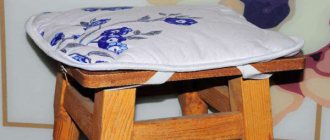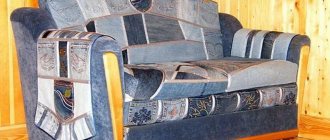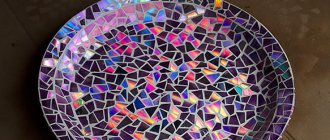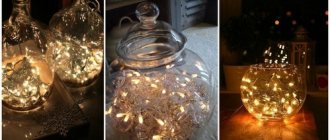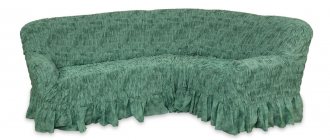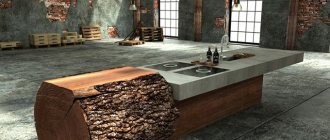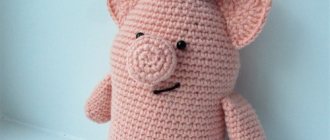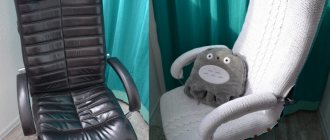If you look at the pages of history, you can see that weaving was known to our distant ancestors. Skillfully working with this natural gift of nature, magnificent masterpieces created from silk, linen, cotton or wool came out of people’s needles.
In those days, each powerful state had its own secrets for making fabric clothing. In addition, thanks to the development of human civilization, which was facilitated by various military campaigns, many fabrics became widespread.
Here we can recall examples of the appearance of muslin in Europe or the widespread distribution of Indian calico due to trade between Great Britain and its colonies.
In those states where weaving was not developed, such goods were worth their weight in gold. By the way, it was thanks to such savings that the patchwork style was created. Patchwork is the creation of designs from fabric scraps.
The modern world can boast of a huge amount of fabrics (the same knitwear or jeans), so saving them has long sunk into oblivion.
And now, thanks to this, we sew crafts from fabric with our own hands, without thinking that we may not have enough of this material.
Useful tips
Before you start making fabric crafts for your home with your own hands, you should look for useful information that would help in your future work.
Moreover, experienced masters have something to say to a beginner:
- When decoupaging old furniture with new patchwork upholstery, do not immediately throw away the old material. It is better to use it as a ready-made diagram. This will make the work much easier;
- When working with crafts, it is best to use fabrics with a denser structure;
- If the craft consists of thin shreds, then, if desired (for additional protection), you can sew an inner lining;
- The edges of the fabric must be finished. Thus, this will allow the product to last longer;
- When choosing a color or pattern, you should adhere to the same style and shades;
For better assimilation of information, it is also worth looking at photos of handmade fabric crafts on the global web. They often show diagrams and the order in which work is performed.
Satin Christmas balls
Making toys is an exciting activity. Satin is ideal for bright jewelry and is easy to work with. New Year's crafts made from fabric turn out sparkling and elegant.
Foam plastic is used as a base, from which a ball is made. Its diameter should be about 7 cm. Then you will need squares of fabric with a side of 5 cm.
We recommend reading:
DIY crafts from Kinder surprise eggs - 125 photos of exclusive options with step-by-step instructions, master class and video- Crafts made from twine - an overview of original design solutions. More than 100 photos of new products + step-by-step instructions for creating crafts with your own hands
DIY crafts from candy wrappers: 150 photos of the best ideas from craftswomen. Simple instructions, master class, diagrams and video tutorials on creating crafts from candy wrappers
You need to take two different colors. The fabric is folded in half and the operation is repeated. Then the satin square is attached to the center of the ball.
Then take four elements of a different color, fold them in the same way as the first part and fasten them crosswise. The center of the first square should remain visible.
The next four elements are glued, stepping back a little. They must close the gaps. The squares continue to be attached until half the ball is covered.
The second part of the toy is made monochromatic, and then a thread with beads is attached to it in a spiral.
Patchwork technique
If there are scraps of old fabric left around the house, there is no need to throw them away immediately, because you can sew a huge number of beautiful and small trinkets from them that can decorate and complement your home design.
In addition, DIY crafts made from scraps of fabric can be an excellent toy that a little rogue or princess will really like.
The most important aspect is that such a piece of art will require very little financial investment. Plus, any mom can do this, since there is no need to master any special sewing techniques.
The patchwork technique can be used not only to create cute trinkets, but also as a “second life” for old furniture or faded upholstery. Thanks to her, the room can sparkle with new colors, and friends who come to visit will applaud the talent and ingenuity of the owner.
True, if a person has developed his own imagination, then he can come up with his own decor. Tools you will need for this task:To get this effect, it is of course better to use ready-made color schemes that will help create an original piece of furniture.
- Scissors;
- Sewing machine;
- Ruler;
- Iron.
How to choose large textile elements (curtains and carpets)
Of course, the larger the element, the more significant role it plays in creating the impression of the interior. If you want it to live up to the name “elite”, you should learn to limit yourself in the pursuit of variety.
For example, to decorate a window, a monochrome palette (shades of the same color) or its combination with neutral tones is desirable. Your curtains can be very complex or quite simple in shape, but color restrictions on combinations are a mandatory rule. For all windows in one room, it is advisable to use a combination of 2-3 fabrics. But the shapes of the curtains may differ slightly.
In addition, a large and contrasting pattern on the curtains is undesirable - it distracts attention from other, more important objects in the room. But if you use plain fabrics, then contrast is quite appropriate.
There are many guides with detailed rules on choosing carpets. For an elite interior, the proportionality of the size of the carpet and the area of the room is especially important. In addition, it is very desirable that individual colors in the carpet pattern be repeated in other interior elements. This creates harmony and prevents the rug from looking like a random object thrown around.
If your choice is classic European or oriental carpets, pay attention to the pattern. If it is large enough, contrasting, variegated or geometric, the upholstery of upholstered furniture is preferably monophonic and neutral tones. And the shades of the carpet can be “supported” by, for example, decorative pillows, a picture above the sofa or vases on the coffee table.
If you want to add a “fresh note” to a strict classic interior, pay attention to “sculptural carpets”: these are products with differences in pile level (high, medium and low). Unlike traditional carpets, their color scheme contains a transition of shades of the same palette or a soft contrast, and some factories create luxurious sculptural carpets of the same tone, but with an original “pile cut”.
Creative handbag made from old jeans
DIY denim crafts are amazing. So many things have been invented in recent years! One of these creative inventions can be considered a women's denim handbag.
In order to make it, a woman will need:
- Fabric from old jeans
- Beautiful brooch;
- Regular scissors;
- Machine for sewing clothes;
- Several pins (5-6 pieces).
There are several options for making it and here is one of them:
- We take old and unnecessary jeans and cut off the legs (we take the line just below the pockets as a basis). Then we remove all edge seams. This will create the base of the bag;
- Turn the result inside out and sew the edges together using a dotted stitch. Using pins, we fasten the lower part, after which we sew everything on a sewing machine;
- Turn the item inside out so that the front side is visible. The main stage has been completed;
- The final touch is the addition of various accessories in the form of rhinestones, precious stones or beautiful patterns.
That's all the work. Now the girl has become the owner of a creative women's bag without spending a penny.
Rules of good taste when choosing fabric elements
Unlike furniture, wall and floor coverings, textile decor does not like compromises with style. Those. if your choice is classic, then all fabric elements should be classic; modern details here will disrupt the overall harmony.
This rule certainly applies to luxury interiors. But there are several more points that determine the work of an experienced decorator.
Fabric almost does not exist without a pattern. The only exception is plain fabrics. But in this case, texture plays a special role. More on this later.
First, let’s talk about the design of fabrics that are preferable to use in an elite interior. Absolutely identical fabrics on all pieces of furniture look banal. That is why decorators try to create various combinations of fabrics that are similar in color. Drawings help them with this.
They should be quite restrained and traditionally “time-tested”:
- stripe (for almost any style, wide or narrow),
- check (for styling in European country),
- small floral and plant patterns (for salon and office styles),
- large flowers, monograms and leaves (for Art Nouveau, Glamor and Baroque).
It is advisable not to mix the last category of pattern with anything other than plain fabrics, and the previous three can be combined in any combination.
If you prefer plain fabrics, then the most common option is to play with shades or contrasts.
But there are other, more effective modern techniques, for example, choosing very close or neutral shades and combining different textures (matte and shiny, dense and translucent, voluminous and openwork, smooth and rough to the touch).
Children's applique
If mommy urgently needs to make a craft for an exhibition in kindergarten, then it is best to immediately look on the Internet. There you can find a huge number of fabric crafts for children with your own hands.
One of the simplest crafts is the most common applique. To do this you need to take:
- Several fabric scraps (preferably made of dense material) of matter;
- Cardboard sheet;
- Cutting scissors;
- PVA;
- Multi-colored buttons.
Manufacturing instructions:
- First, we make sketches of various objects on fabric. Let's say in this case it will be trees. You can even entrust such work to your son or daughter. This is done with chalk or soap;
- After this, we cut out the resulting shapes in the next sequence;
- Next, we begin to prepare the colored background. Take a sheet of cardboard and glue a wide strip of fabric or colored paper onto it. Although if you have colored cardboard it will be easier;
- We take our finished parts (crown, trunk, grass) and glue them with PVA onto the prepared background. We are waiting for everything to dry;
- Next on the list is making the frame. You can make it from any material you have at hand. Whether it's regular cardboard or satin ribbon;
- The final stage consists of gluing multi-colored buttons. In our case, they will depict fruits that grow on trees.
While working, you should involve your child as actively as possible. It will be useful if he himself dreams up some details. This will help your child feel responsible for the work done.
Decorating your home
Textiles occupy an important place in the interior of the house. Curtains and bedspreads, original pillowcases on sofa cushions can change your home beyond recognition. Many fabric crafts for the interior can be made with your own hands:
Sewing kitchen curtains is easy even for a novice needlewoman, and if you decorate them with lace or embroidery, they will become even more attractive.
Important! Information portal https://podelkisamodelki.ru/ - offers a huge selection of step-by-step instructions with detailed descriptions and recommendations from craftswomen.
An embroidered or decorated tablecloth will add coziness to the room. It is important that it matches the style of the room. Handmade tablecloths and napkins fit well into rustic interior styles: Provence, rustic. They are appropriate in vintage and eco-style.
From linen and burlap you can sew not only tablecloths and napkins, but also “clothes” for candlesticks and decorative vases. Shades for table lamps and floor lamps in the shabby chic style, made of cotton fabric, look impressive.
There is a place for textiles in every room: bright oven mitts and kettle warmers will make the kitchen cozy, coasters for dishes, the bedroom and living room will be filled with coziness by handmade pillows and rugs made from shreds.
Fabric crafts for children are a variety of original ideas that allow you to create a fabulous interior in your room.
Photos of DIY fabric crafts
The role of textiles in the interior and which fabrics are better
The role of textiles in the interior is very great : with its help you can both “revive” the situation and “kill”.
Fabrics in interior design are one of the most important components, one might say, its clothing, the finishing touch. It is enough to change only the textiles to get a completely new interior design. If your mood and preferences often change, you want to bring something new into the interior - you don’t have to do renovations every time. You are already armed with information about flowers. Textile interior decor is the simplest thing you can change in your home in order to remove negative colors as much as possible and add positive ones. It doesn’t matter if the color is “bad,” for example, on the upholstery of a sofa. This is not a reason to change furniture or reupholstery. The situation can be corrected by special furniture covers, which, if desired, you can even sew yourself. If you know how to sew, by all means sew yourself.
The main question that arises in almost everyone’s mind is: what fabrics are best to choose for interior decoration? Literally until the end of the 19th century, people did not even have such questions - only natural ones.
Natural fabrics have always been and will always be in price. Silk was first made in China, cotton in India, and wool in the Middle East. Then artificial fibers appeared, and fabrics began to be made from them. Artificial fabrics, as a rule, are much cheaper than natural ones, but they also look the part. Even very high-quality artificial fabric is an analogue of natural fabric.
If you want ease of care, practicality and unpretentiousness, choose mixed fabrics. In them, natural fiber is intertwined with artificial fiber, and the fabric becomes more durable, does not shrink, and is easier to iron. Ideally, if there are no more than 30% artificial impurities. Then the fabric retains its natural appearance and will not present a surprise - shrinkage along the length (this is especially critical for curtains and tablecloths).
Tip: just a couple of silk pillows with braid or applique are enough to raise the status of the interior. Intuitively, you can determine that something is expensive by the amount of labor put into it.
Look how textiles are used in the interior in these photos:
Pouch with ribbons
This bag is useful for giving gifts, making sachets, and storing pencils. A large bag can be used instead of a store-bought bag for replacement shoes.
First you need to decide on the size of the future craft. And the simplest patterns of fabric crafts will help you do this. It will be a square or a rectangle, or maybe even a circle, depending on the desired shape of the future craft.
We recommend reading:
Crafts made from twine are original and interesting uses for twine. 125 photos and video descriptions of ideasCrafts from foamiran: master class, diagrams, examples and step-by-step guide from experts on how to make crafts from foamiran
Crafts made from colored paper - examples and step-by-step master class for children and adults (95 photos and videos)
First, carefully bend the top part by a centimeter and sew it together so that there is room left for placing the cord or ribbon that will represent the ribbons. Using a safety pin, thread the ties and tie the ends.
We fold the blanks together, inside out, aligning them along the top edge. Sew three sides together, leaving the top edge untouched. We turn the resulting bag inside out and decorate it with beads, ribbons, applique, and embroidery.
Often the bag is decorated before stitching begins. It will be more convenient this way.
Ideas for the yard and garden of your home: original design of the site
Creativity is also possible in the garden plot, and improvised materials will come in handy for this! Remnants from construction, old furniture, unnecessary bicycles, and dishes are used. Before throwing something away, you should look at it from a different angle: there is a possibility that right now, seemingly unnecessary trash is turning into something unusual, wonderful and useful.
Using leftover cinder blocks in the garden
Cinder block is a necessary thing in construction, but it often happens that several of these powerful “stones” remain unused. Throw it away? Yes you! Let's bring them to the garden immediately!
Since they are empty inside, it seems natural to use them as a wall with planters
Pots are placed in any convenient way
Related article:
Concrete street flowerpots. Step-by-step manufacturing instructions, types of forms, materials, decoration techniques and many photo examples in a special publication in our online magazine.
Compositions for flowers and garden decorations from scrap materials
A modern garden consists of more than just flower beds. If previously flowers were planted mainly only in the ground, today they can be seen in hanging flower pots, in wall-mounted pots, and in original boxes.
For the product, take any boxes or cardboard boxes. Dip an unnecessary rag into the cement mortar and throw it over the mold. As soon as the cement has set, the mold is removed, and the beautiful pot, unusual to the eye, is painted and used for its intended purpose.
A balloon is inflated and a rope passed through a cement solution is wound around it. Work exclusively with gloves! After some time, the cement will harden, the ball will burst on its own, the excess from the product can be easily cleaned with a knife, and the yard will acquire a new decoration.
A bench is built from dead wood on which flowers are placed. For work use an axe, a hacksaw, a hammer and nails
Rubber gloves are filled with cement, the shape of future palms is slightly refined and left to dry. The rubber is torn off, and either a new wonderful pot or a birdbath appears in the garden
Little things made by yourself for the home and garden have not only an aesthetic function, but also a useful one. If we need a box for storing phones, we can weave it from newspaper tubes and decorate it with decoupage. If your garden needs a new pot, you don’t have to install a dull plastic one! Why not try other materials in this role? Therefore, it’s not always worth running to different stores to purchase decor, because the design of the house and garden depends on us, so let’s really decorate everything with our own hands!
Related article:
Do-it-yourself flower beds and flower beds from scrap materials. Photo examples of bright and original flower beds made from car tires, plastic bottles, logs, stones and other waste material in a special material.
Creative panel made from patches
Any housewife will have colorful scraps of fabric in her house that don’t have to be thrown away. You can create a chic panel from multi-colored textiles, especially if we are talking about fans of abstraction. By tinkering a little with the scraps, you can get an original composition, which will later become the pride of the owner of the house.
For the process of making a patchwork panel you will need:
- several scraps of fabric in contrasting shades;
- thick cardboard for the base;
- wooden frame (you can make it yourself from slats);
- threads and sewing machine;
- fabric glue.
All the work will not take much of your time and consists of the following steps:
1. Initially, a schematic picture is formed, then blanks are selected. To avoid confusion, it is better to number them according to the diagram. The resulting composition can be transferred directly to cardboard.
2. Blanks are cut out from the scraps and begin to be placed according to the diagram. To do this, each piece of fabric must be folded in half so that the cut part is not visible on the other side of the future picture, and placed on top of the previous ones.
3. To achieve the required brightness and implement an interesting solution, you need to take a responsible approach to the selection of colors. The shade of the base must be in full accordance with the theme and style of the interior.
4. To fix the patches, you can use either the standard method - sewing on a machine, or use glue designed for working with textiles.
5. The finished composition just needs to be inserted into the frame. You can make several such decorations from scraps, then you will get a modular panel on the wall.
As you can see, making a panel with your own hands is quite simple. This entertainment can also be done for families. This is especially true for children. When working with children, do not forget to control their actions, since scissors are used in the process, and the child may get hurt.
Different techniques for creating paintings from scraps (3 videos)
Beautiful textile panels (45 photos)
Source
home textiles photo
home textiles photo
Nowadays you can buy tapestries very inexpensively - these luxurious fabric products that were so highly valued in the past. Or maybe you just have a piece of tapestry lying around in your grandmother’s chest?
Tapestry can be used to make a wall panel that imitates a small curtain.
A piece of fabric of the size you need is edged with another fabric “in a frame” and hung on a cornice with large rings. You can complete the composition with pairs of tassels on the curtains of the cornice.
The front side of the pillow can be made from the same tapestry, if there is another small piece of tapestry.
- Felt jewelry.
Felt is a universal decorative material that does not need to be processed along the edges. This is just a godsend for the needlewoman.
You can decorate a simple pillow with this wonderful arrangement of felt flowers, finishing the composition with a satin ribbon bow:
It’s very easy to create a voluminous effect on fabric using the same felt.
To do this, cut out a couple of circles from multi-colored felt and stitch them in different directions to a pillowcase on a decorative pillow. Bright and fun. Good for children's room. The same technique, perhaps with larger circles, can be used when creating a lambrequin or scoop.
Creating such a chicken from felt is not at all difficult. :
You just need to print out any picture of this bird, cut out parts from felt and sew it by hand.
Then you can create a composition and decorate with it a decorative pillow, panels and lambrequins in the nursery.
Why not an idea?
3. Ruffles.
Gathered strips of fabric with a finished edge can be attached to the base in different directions: horizontally, obliquely, in a square or round spiral. This simple technique in any form will give an interesting surface texture and decorate not only a decorative pillow, but can serve as the main element for creating a bedspread:
- Soft toy-decor element:
Very interesting ideas can come to mind for decorating home textiles using soft toys that can be found in any home:
To make such a composition from a decorative pillow and a soft toy, on the front side of the pillowcase you need to make a pocket in which to put any soft toy and so that it does not fall out, sew it on.
Curtains for a children's room can be made in the same style. A pocket from which a favorite children's toy peeks out, or a tie to which this toy is sewn.
This pick-up is made from a soft Teddy Bear toy, to which, to complete the composition, bells have been added to match it, which are made by hand. It seems that Winnie the Pooh is descending from a tree on balls, running away from angry bees.....:
How do you like this monkey holding a homemade handbag in its paws, in which you can put anything?:
And if you turn the same monkey over and grab the curtain with its paws, you will get a very original holder for a curtain composition in a nursery.
If you want to receive new articles directly by email, then click:
SUBSCRIBE TO SITE UPDATES⇒
- Kiss pillow.
Give such a humorous pillow to your loved one, which will become not only a reminder of your romantic feelings, but also an original decoration for your home:
Download the pattern for this pillow:
